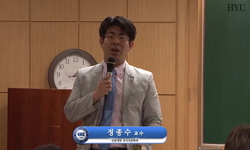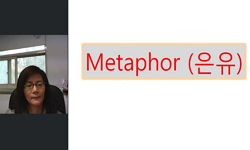This article first analyzes the basic semantics of “下" and denies that “下” “contains righteousness” and deduces its image schema. The image schema consists of horizontal lines and ellipses, where the ellipse is the object below the horiz...
http://chineseinput.net/에서 pinyin(병음)방식으로 중국어를 변환할 수 있습니다.
변환된 중국어를 복사하여 사용하시면 됩니다.
- 中文 을 입력하시려면 zhongwen을 입력하시고 space를누르시면됩니다.
- 北京 을 입력하시려면 beijing을 입력하시고 space를 누르시면 됩니다.
https://www.riss.kr/link?id=A105437532
- 저자
- 발행기관
- 학술지명
- 권호사항
-
발행연도
2018
-
작성언어
Chinese
- 주제어
-
등재정보
KCI등재
-
자료형태
학술저널
-
수록면
7-23(17쪽)
- 제공처
- 소장기관
-
0
상세조회 -
0
다운로드
부가정보
다국어 초록 (Multilingual Abstract)
This article first analyzes the basic semantics of “下" and denies that “下” “contains righteousness” and deduces its image schema. The image schema consists of horizontal lines and ellipses, where the ellipse is the object below the horizontal line. This image schema only emphasizes the position of the object, not its number and shape. The construction can be divided into several categories according to the relationship between “contents” and “containers”: (1) the contents are contained in a three-dimensional container ; (2) the contents are contained in a flat two-dimensional container; (3) the contents are arranged at the periphery of the container. “下” in these three subcategories can be classified as “under” the image schema after a certain reasoning. This is also the cognitive motivation of the construction meaning of “containing righteousness”. The “V” in the construction can be divided into two categories according to the semantic features, and the drive-path schemas are also divided into two categories. According to the positions of “container” and “contents”, the construction`s semantic focus is different too.
목차 (Table of Contents)
- 1. 引言
- 2. “下”的語義及其意象圖式
- 3. “容器”形態下的下位分類及其與基本意象圖式的契合
- 4. “V+得/不+下”構式的驅動-路徑圖式與語義焦點
- 5. 結論
- 1. 引言
- 2. “下”的語義及其意象圖式
- 3. “容器”形態下的下位分類及其與基本意象圖式的契合
- 4. “V+得/不+下”構式的驅動-路徑圖式與語義焦點
- 5. 結論
- 〈參考文獻〉
- 〈ABSTRACT〉
동일학술지(권/호) 다른 논문
-
코퍼스 기반 현대중국어 유의어 대상(對象)류 개사 ‘對’, ‘給’, ‘跟’, ‘嚮’ 비교 분석 연구
- 중국어문학연구회
- 文有美(Moon. You-mi)
- 2018
- KCI등재
-
중국어 교재분석을 통한 감정표현기능 어법 항목 선정에 대한 고찰
- 중국어문학연구회
- 崔?才(Choi, Eun-jae)
- 2018
- KCI등재
-
일제강점기 한국 출판 중국어학습서와 국내의 관련 연구 동향 분석
- 중국어문학연구회
- 金雅瑛(Kim. A-young)
- 2018
- KCI등재
-
중국어 중등교사 임용시험과 교직이수교과목의 효율적 연계에 대한 소고
- 중국어문학연구회
- 金兌垠(Kim, Tae-eun)
- 2018
- KCI등재






 DBpia
DBpia







